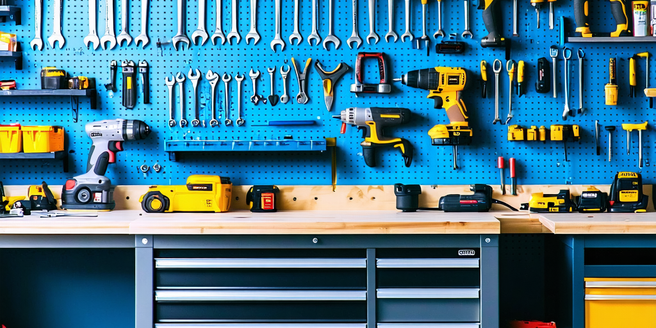
Setting Up an Efficient Workspace
Creating an efficient workspace is a crucial step in ensuring your DIY station remains effective and organized. Start by choosing a location that is spacious and well-lit, allowing you to focus on your projects with minimal distractions. A dedicated area for tools and materials helps in maintaining order and increases productivity. Implementing smart storage solutions like wall racks or pegboards can save space and make tools easily accessible. Invest in a reliable workbench that suits the nature of your projects; it should be sturdy and have enough surface area to accommodate your needs. Additionally, ensure your workspace is ergonomic to prevent strain during extended work periods. Regularly reassessing the layout and functionality of your workspace ensures that it evolves with your projects and remains a vital component of your DIY endeavors.
Essential Tools for DIY Maintenance
Having the right tools is the cornerstone of successful DIY maintenance. To start, invest in high-quality basics such as a hammer, screwdriver set, pliers, adjustable wrench, and a measuring tape. For more specific tasks, consider acquiring power tools like a cordless drill, jigsaw, or circular saw. These will expand the range of projects you can undertake. Safety gear, including gloves and goggles, should never be overlooked, as they protect you from potential hazards. A well-stocked toolbox reflects readiness and ensures you are not caught off guard in the middle of a project. Investing in durable tools that you maintain and care for properly can significantly extend their lifespan, making them cost-effective over the long term. Remember, quality over quantity is key when selecting essential tools for your DIY station.
Routine Cleaning and Organization Tips
Routine cleaning and organization are vital for sustaining the efficiency of your DIY station. Start by adopting a daily habit of tidying up your space after each project. Wipe down surfaces to prevent dust and debris from accumulating, which can damage tools and equipment over time. Implement an organizational system where every tool has a designated place, making it easy to find what you need quickly. Labeling drawers and shelves can assist in maintaining this order. Regularly check your inventory of supplies, and dispose of or recycle any unnecessary clutter. Reorganizing periodically helps in keeping the workspace dynamic and functional. It also encourages a sense of pride in your DIY station, motivating consistent upkeep. The goal is to create an environment where creativity can flourish without being hindered by disorder or chaos.
Safety Measures for Long-lasting Gear
Ensuring the longevity of your tools and equipment begins with implementing consistent safety measures. Always start with reading the manufacturer’s guidelines for each tool to understand its safe operation and maintenance requirements. Regularly inspect your tools for any signs of wear or damage, as using compromised equipment can pose safety risks. Sharpen blades, replace worn-out parts, and lubricate moving elements to maintain optimal performance. Store tools in a dry, secure place to prevent rust and corrosion, which can shorten their lifespan. Personal safety is equally important; always use protective gear like gloves, safety glasses, and ear protection when necessary. By prioritizing these safety measures, not only do you extend the life of your gear, but you also create a safer and more productive DIY environment for all your projects.
Upgrading and Replenishing Supplies
To keep your DIY station in peak condition, regularly upgrading and replenishing supplies is essential. Begin by taking stock of your current inventory; assess which tools are outdated or frequently malfunctioning, and research their modern equivalents that offer improved features or capabilities. Upgrading does not only apply to tools but also to consumables such as adhesives, paints, and fasteners. Ensure you replenish these supplies so that you are always fully equipped to take on any project. Consider subscribing to newsletters from hardware stores or online marketplaces to stay informed about the latest products and any potential discounts. When replacing older supplies, opt for high-quality alternatives that promise to last longer and perform better. Systematically organizing and updating your inventory will streamline your projects and enhance the overall functionality of your workshop.
